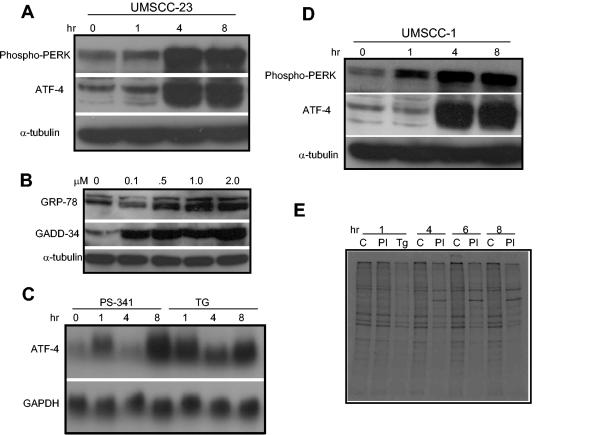FIG. 3.
PS-341 induces ER stress in HNSCC cells. (A and B) UMSCC-23 cells were treated with PS-341 for the indicated time periods and concentrations. Whole-cell extracts were prepared, and 50-μg aliquots of proteins were probed with polyclonal antibodies against phospho-PERK, ATF-4, GRP-78, and GADD-34. For loading control, the membranes were stripped and reprobed with monoclonal antibodies against α-tubulin. (C) UMSCC-23 cells were treated with PS-341 and thapsigargin (TG) for the indicated time periods. The total RNAs were extracted, and 10-μg aliquots of RNAs were resolved on 1.5% agarose formaldehyde gels. The membrane was probed with 32P-labeled ATF cDNA probes. For loading control, the membrane was stripped and reprobed with 32P-labeled glyceraldehyde-3-phosphate dehydrogenase (GAPDH) probe. (D) UMSCC-1 cells were treated with PS-341 for the indicated time periods, and Western blot analysis was performed as described in (A). (E) UMSCC-23 cells were treated with PS-341 or TG as a positive control for the indicated time periods. Cells were labeled with 35S for 15 min. Ten micrograms of 35S-labeled proteins were resolved by SDS-10% PAGE and exposed to autoradiographic film. C, vehicle control; PI, PS-341; Tg, TG.

